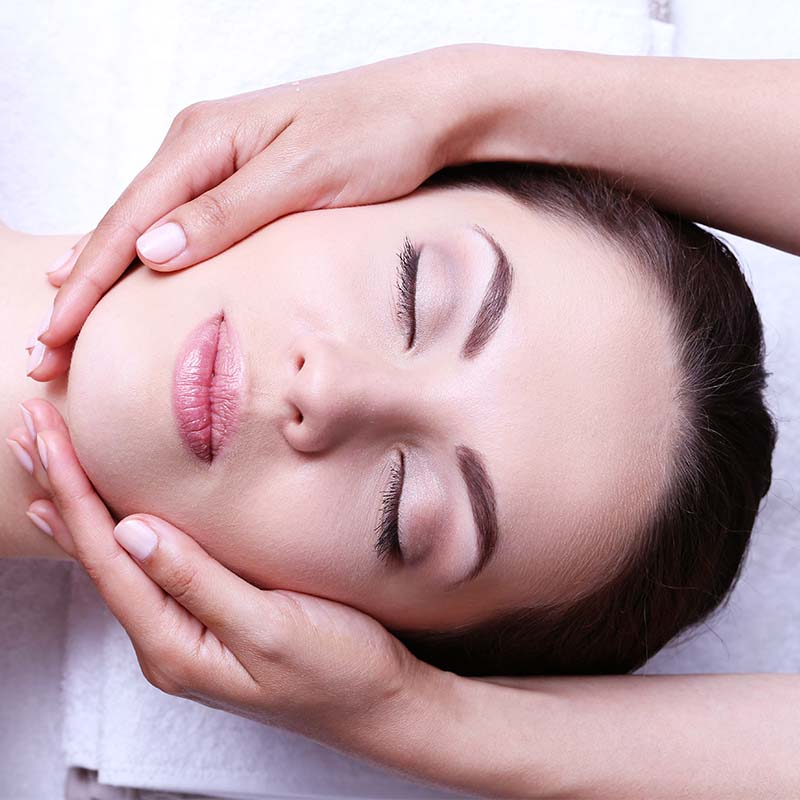
Ayurveda Skincare Secrets: 4 Nourishing Tips for Radiant, Healthy, Supple Skin to Ignite Your Glow
Introduction
Beautiful, healthy skin is not only a reflection of external beauty but also an indicator of overall well-being. Ayurveda skincare, the ancient Indian system of medicine, offers valuable insights into achieving and maintaining healthy skin. By adopting Ayurveda Skincare a holistic approach that emphasizes the balance of mind, body, and spirit, Ayurveda skincare provides a treasure trove of natural remedies and practices to nourish and rejuvenate your skin. In this blog post, we will explore Ayurvedic tips for achieving healthy and supple skin, allowing you to enhance your natural radiance and experience a deeper connection with your body.
Understand Your Dosha
According to Ayurveda, the doshas – Vata, Pitta, and Kapha – are the fundamental energies that govern our physical and mental characteristics. Each person has a unique combination of these doshas, which influences their skin type and overall health. Understanding your dominant dosha is essential for tailoring your skincare routine to meet your specific needs.
Vata Dosha: Vata skin tends to be dry, rough, and easily affected by the environment. It may be prone to fine lines, flakiness, and a lack of moisture. To balance Vata skin, focus on nourishing and hydrating practices. Use gentle cleansers, avoid harsh chemicals, and incorporate rich, moisturizing oils like sesame or almond into your skincare routine.
Pitta Dosha: Pitta skin is typically sensitive, prone to redness, inflammation, and breakouts. It may have an oily T-zone but be dry in other areas. Cooling and soothing ingredients are beneficial for Pitta skin. Choose gentle, non-irritating cleansers, and opt for oils like coconut or sunflower, which have a cooling effect on the skin.
Kapha Dosha: Kapha skin tends to be oily, thick, and prone to congestion, blackheads, and dullness. To balance Kapha skin, focus on deep cleansing and detoxifying practices. Use light, non-comedogenic oils like jojoba or grapeseed, and incorporate astringent and clarifying ingredients like turmeric, clay, and lemon into your skincare routine.
Identifying your dominant dosha is the first step in creating a skincare routine that caters to your specific needs. However, keep in mind that many individuals have a combination of doshas, so it’s important to observe your skin’s characteristics and make adjustments accordingly. Ayurveda emphasizes the importance of maintaining balance in all aspects of life, including skincare, to promote healthy and supple skin.
Cleanse Your Skin
Cleansing your skin is a vital step in any skincare routine, as it helps remove dirt, impurities, excess oil, and dead skin cells, allowing your skin to breathe and absorb nourishing ingredients more effectively. Ayurveda emphasizes the use of natural and gentle cleansers that do not strip away the skin’s natural oils, maintaining its balance and promoting a healthy complexion. Here are some Ayurveda skincare tips for cleansing your skin:
Choose Natural Cleansers: Look for natural ingredients that are suitable for your skin type. Ayurveda skincare suggests using herbal powders such as chickpea flour (besan), neem, or sandalwood. These powders have cleansing and exfoliating properties while being gentle on the skin.
Create Homemade Cleansers: Mix the herbal powders with water or rose water to form a paste. Adjust the consistency as needed, ensuring it is neither too thick nor too runny. This homemade cleanser can be customized based on your skin type and concerns.
Gently Massage the Cleanser: Apply the cleanser onto damp skin and massage it in circular motions. This helps improve blood circulation, remove impurities, and stimulate lymphatic drainage. Be gentle and avoid harsh scrubbing, as it can irritate the skin.
Rinse with Lukewarm Water: After massaging the cleanser onto your skin for a minute or two, rinse it off with lukewarm water. Avoid using hot water, as it can strip away natural oils and leave your skin feeling dry and tight.
Pat Dry and Follow with Moisturizer: After cleansing, gently pat your skin dry with a soft towel. Leaving some moisture on the skin helps enhance the absorption of a moisturizer. Choose a moisturizer that suits your skin type to keep your skin hydrated and supple.
By incorporating these Ayurveda skincare cleansing practices into your skincare routine, you can maintain a clean and refreshed complexion while respecting the natural balance of your skin. Remember to listen to your skin’s needs and adjust your cleansing routine accordingly.
Nourish with Ayurvedic Oils
Nourishing the skin with Ayurvedic oils is a key aspect of achieving healthy and supple skin. Ayurveda recognizes the therapeutic properties of various oils and recommends using them based on your dosha to promote balance and nourishment. Here are some tips on how to nourish your skin with Ayurveda skincare oils:
Choose the Right Oil: Selecting the appropriate oil for your skin type and dosha is crucial. For Vata skin, which tends to be dry, choose nourishing and warming oils such as sesame or almond oil. Pitta skin, which is sensitive, benefits from cooling and soothing oils like coconut or sunflower oil. Kapha skin, which is oily, can benefit from lighter oils such as jojoba or grapeseed oil.
Warm the Oil: Gently warm the oil using a double boiler or by placing the container in warm water. Avoid heating the oil directly on high heat as it can alter its properties. Warm oil penetrates the skin more effectively and enhances absorption.
Perform Abhyanga: Abhyanga is the practice of self-massage with warm oil. Start by pouring a small amount of oil into your palms and rub them together to warm it further. Begin massaging the oil onto your body using long, sweeping strokes. Pay attention to your limbs, joints, abdomen, and back. Massage in a circular motion on joints and in an upward direction on limbs to promote circulation and lymphatic drainage.
Leave the Oil on for Some Time: Allow the oil to penetrate the skin by leaving it on for 15-30 minutes. You can use this time for relaxation or engage in gentle movements like yoga or meditation. The warmth and nourishment of the oil will deeply hydrate and revitalize your skin.
Shower or Bathe: After the specified time, take a warm shower or bath to rinse off the oil. Use a mild, natural cleanser to remove excess oil without stripping away the skin’s natural moisture.
Moisturize if Needed: Depending on your skin type, you may or may not need an additional moisturizer after the oil massage. Vata and dry skin types may benefit from applying a light moisturizer, whereas Pitta and Kapha skin may not require additional moisturization.
Incorporating Ayurveda skincare oils into your skincare routine through the practice of Abhyanga provides numerous benefits. It not only nourishes and hydrates the skin but also improves blood circulation, calms the nervous system, and promotes overall well-being. Make sure to perform the oil massage regularly to maintain healthy and supple skin.
Practice Facial Massage
Facial massage is a wonderful Ayurveda skincare practice that can enhance the health and appearance of your skin. It promotes blood circulation, relaxes facial muscles, and stimulates lymphatic drainage, resulting in a rejuvenated and glowing complexion. Here are some tips to incorporate facial massage into your skincare routine:
Choose a Suitable Oil: Select an oil that suits your skin type and dosha. Use a small amount of oil such as coconut, almond, or jojoba oil, which are suitable for most skin types. Warm the oil slightly to enhance its absorption and nourishing properties.
Start with Clean Skin: Begin the facial massage with clean skin. Use a gentle cleanser to remove any dirt or impurities. You can also use a warm towel to gently cleanse and open up the pores.
Apply Oil and Start Massaging: Take a few drops of the oil and apply it to your fingertips. Begin massaging your face using upward and outward strokes. Start from the center of your face and move towards the hairline, focusing on areas like the forehead, temples, cheeks, and jawline.
Pay Attention to Problem Areas: If you have specific concerns such as tension in the forehead or puffiness around the eyes, spend extra time massaging those areas. Use gentle pressure and circular motions to release tension and improve circulation.
Massage Acupressure Points: Ayurveda skincare recognizes specific acupressure points on the face that are believed to correspond to different organs and systems in the body. Gently press these points with your fingertips to stimulate energy flow and promote overall well-being.
Practice Regularly: Consistency is key when it comes to facial massage. Aim to incorporate it into your skincare routine at least a few times a week to reap the benefits. Even a few minutes of massage can make a noticeable difference in the health and radiance of your skin.
Facial massage not only improves the health of your skin but also provides a moment of self-care and relaxation. It can be done in the morning or evening, whichever time suits you best. By incorporating this Ayurveda skincare practice, you can nourish your skin, reduce tension, and promote a youthful and vibrant appearance.
Herbal Face Masks
Herbal face masks are a rejuvenating and nourishing addition to any skincare routine. Ayurveda skincare encourages the use of natural ingredients to address specific skin concerns and promote a healthy complexion. Here are some tips for incorporating herbal face masks into your skincare regimen:
Identify Your Skin Concerns: Determine your skin type and any specific concerns you would like to address. Ayurveda categorizes skin types based on the doshas. Vata skin tends to be dry, Pitta skin is sensitive, and Kapha skin is oily. Select ingredients that are suitable for your skin type and concerns.
Choose Herbal Ingredients: Ayurveda skincare offers a wide range of herbs and natural ingredients that can be used in face masks. Here are a few examples:
For Vata skin: Honey, aloe vera, rose water, and almond powder provide moisturization and nourishment.
For Pitta skin: Cucumber, mint, sandalwood, and aloe vera have cooling and soothing properties to calm the skin.
For Kapha skin: Turmeric, clay, lemon, and neem possess astringent and detoxifying properties to balance oiliness and promote clarity.
Mix with a Base: Combine the herbal ingredients with a suitable base to create a mask. Options include yogurt, honey, aloe vera gel, or chickpea flour (besan). These bases provide additional benefits, such as hydration, exfoliation, and soothing properties.
Apply the Mask: Cleanse your face before applying the herbal mask. Use your fingertips or a clean brush to evenly apply the mixture to your face, avoiding the delicate eye area. Leave the mask on for 15-20 minutes, or as directed by the specific recipe or product instructions.
Rinse Off: After the designated time, gently rinse off the mask with lukewarm water. Avoid scrubbing harshly, as it can irritate the skin. Pat your face dry with a soft towel.
Moisturize and Follow Up: After rinsing off the mask, follow up with a moisturizer suitable for your skin type to lock in hydration and nourishment. This step helps maintain the skin’s balance and suppleness.
Remember to perform a patch test before applying any new ingredient to your face to ensure you don’t have any adverse reactions. Additionally, it’s important to choose organic and high-quality ingredients for optimal results.
Incorporating herbal face masks into your skincare routine allows you to harness the power of natural ingredients and address specific skin concerns. Enjoy the rejuvenating experience while promoting a healthy and radiant complexion.
Conclusion
Incorporating Ayurveda skincare into your routine is transformative. By understanding your dosha and embracing Ayurvedic principles, you can achieve healthy, radiant skin. Nourish your skin with natural ingredients, practice self-care rituals like facial massage and herbal masks, and experience the holistic benefits of Ayurveda skincare.




From retro to boho, there’s a million different looks you can create with a scarf. It can be hard to figure out a good wrap on your own, but an easy step-by-step guide can make all
Head wraps have really grown in style variety and popularity. There are scarves of countless colors and prints that can be found in. I love how timeless they look, especially in the colder months! It is all about expressing yourself to the world.
From retro to boho, there’s a million different looks you can create with a scarf. It can be hard to figure out a good wrap on your own, but an easy step-by-step guide can make all